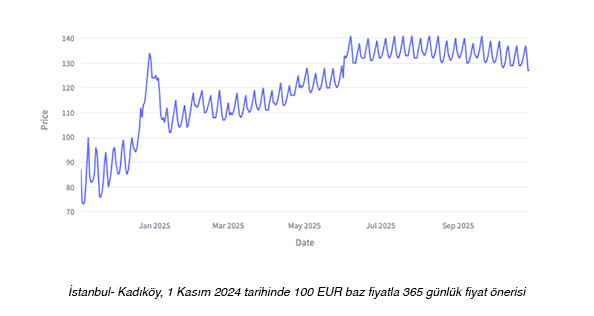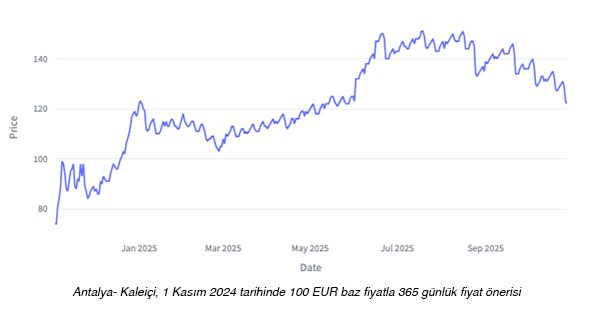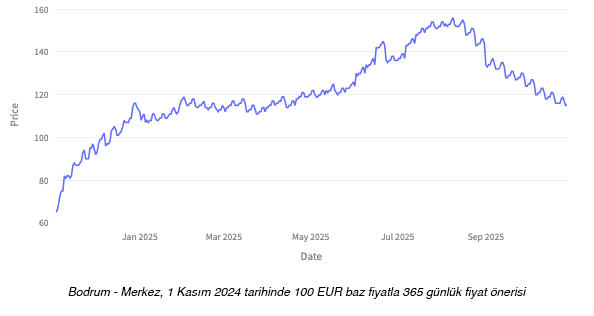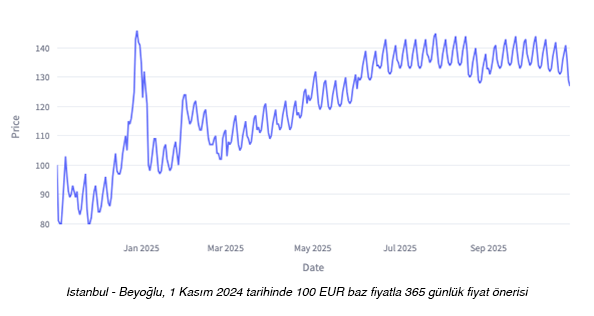How Does Homesberg Dynamic Pricing Work?

Airline Style Pricing for Your Property
Dynamic pricing is a crucial revenue management strategy used across industries—from airlines and e-commerce to car rentals and electricity providers. The main goal of dynamic pricing is to maximize revenue and profit by adjusting your prices daily based on market conditions.
In our previous articles, we discussed why dynamic pricing is so important when offering short-term, tourism-oriented rentals. In this article, we’ll give an overview of how the Homesberg dynamic pricing model works.

What You Need for Dynamic Pricing
The core requirement for effective dynamic pricing is to have reliable historical and real-time data about the market you are pricing in. You need to know your competitors and the market well, and track occupancy and pricing for any time frame.
In the industries mentioned above, where the number of providers is limited, such monitoring is relatively easy. However, on short-term rental platforms, where thousands of listings can differ in various ways, doing this every day of the year would require you to spend at least a few hours a day analyzing your local competitors for the next 180 days. If you are dedicating this much effort, we applaud you—and we’d love to hear about your experiences! But let’s ask: if you were providing this service to another host, how much would you charge per hour?
At Homesberg, we handle this analysis for you, 24/7, 365 days a year. For more detail on our data, we strongly recommend visiting our World Data page. Zoom in far enough on the map and you’ll be able to see your own listing and your projected 2024 revenue.

The Homesberg Dynamic Pricing Model
The Homesberg dynamic pricing model operates like autopilot, allowing you to set the main control parameters. You determine the minimum, base, and (optionally) maximum prices, which act as the backbone of the system.
Within the price range you set, our model calculates the daily price by adding (or subtracting) percentage-based factors from three main components onto your base price. Your price will never fall below your minimum price, or rise above your maximum price (if set). The three components affecting your price are:
Seasonality
Similarity
Lead Time
Let’s take a closer look at each:
Seasonality: Understanding High and Low Demand Periods
Seasonality is one of the most important factors directly affecting short-term rental prices. For example, prices rise in holiday destinations during summer, and in city centers during business events or public/religious holidays. Understanding and integrating these seasonal fluctuations into your pricing model is critical for optimizing revenue.
Our underlying data analysis process has tracked price changes in each region in detail for two years. By monitoring demand levels for every month, week, and day, we identify when prices are typically higher or lower. This database helps us understand seasonal trends and see how they impact prices—including not just summer and winter, but also short-term effects like official holidays and local events. We price your listings accordingly and automatically update prices on your channels daily.
Similarity: Pricing Relative to Nearby Competitors
The second component, similarity, ensures pricing based on occupancy rates of comparable rentals nearby. This allows us to reach the right price level, accounting for market competition. But what do we mean by “similar rentals”?
When conducting similarity analysis, we consider:
Number of rooms and capacity: How many guests can stay?
Number and quality of reviews: Guest feedback indicates popularity and guest expectations.
Amenities: Features like Wi-Fi, parking, workspace, pool, or air conditioning significantly impact pricing.
The similarity component helps set optimal prices by monitoring occupancy rates of similar properties. If comparable listings nearby are booking up, we gradually increase your price. Conversely, if demand for similar properties is low, we adjust your price to boost your occupancy and revenue. This analysis lets hosts quickly adapt to market changes and optimize earnings.
Lead Time: Pricing by Booking Window
The third component, lead time, analyzes regional booking habits. This metric represents the time between when a booking is made and the actual stay. Knowing how far in advance bookings typically happen allows price optimization for those timeframes. Some regions see bookings weeks in advance, while in others, guests tend to book last-minute.
Here’s how we use lead time:
Long Lead Time: If a guest books weeks in advance, it may signal high future demand. We can raise prices for those dates accordingly.
Short Lead Time (Last-Minute Bookings): If demand is low as the date approaches, we lower prices to attract more bookings and minimize revenue loss from vacancies.
Lead time modeling makes it possible to track reservation trends and dynamically update prices. As high-demand periods approach, this helps hosts maximize income.

Professionalize Your Business
With the dynamic pricing model, Homesberg helps you earn more. Additionally, our professional management modules help you elevate your business effortlessly.
Airbnb & Booking integration: Sync calendars and prices across channels.
Performance dashboards: Track revenue, occupancy, costs, and more for your listings.
KBS integration: Simplifies identity reporting.
Market and competitor analysis: Monitor your area and neighboring listings.
About Homesberg
See where you stand. With Homesberg, you can check which page you rank on and adjust your prices to reach the position you want.
Homesberg is an all-in-one vacation rental management platform built around the must-have features hosts truly need: self-reliant market data collection, an Airbnb ranking tracker, a robust dynamic pricing engine, and seamless integrations with all major channels. No more juggling multiple tools or paying for underutilized features.
